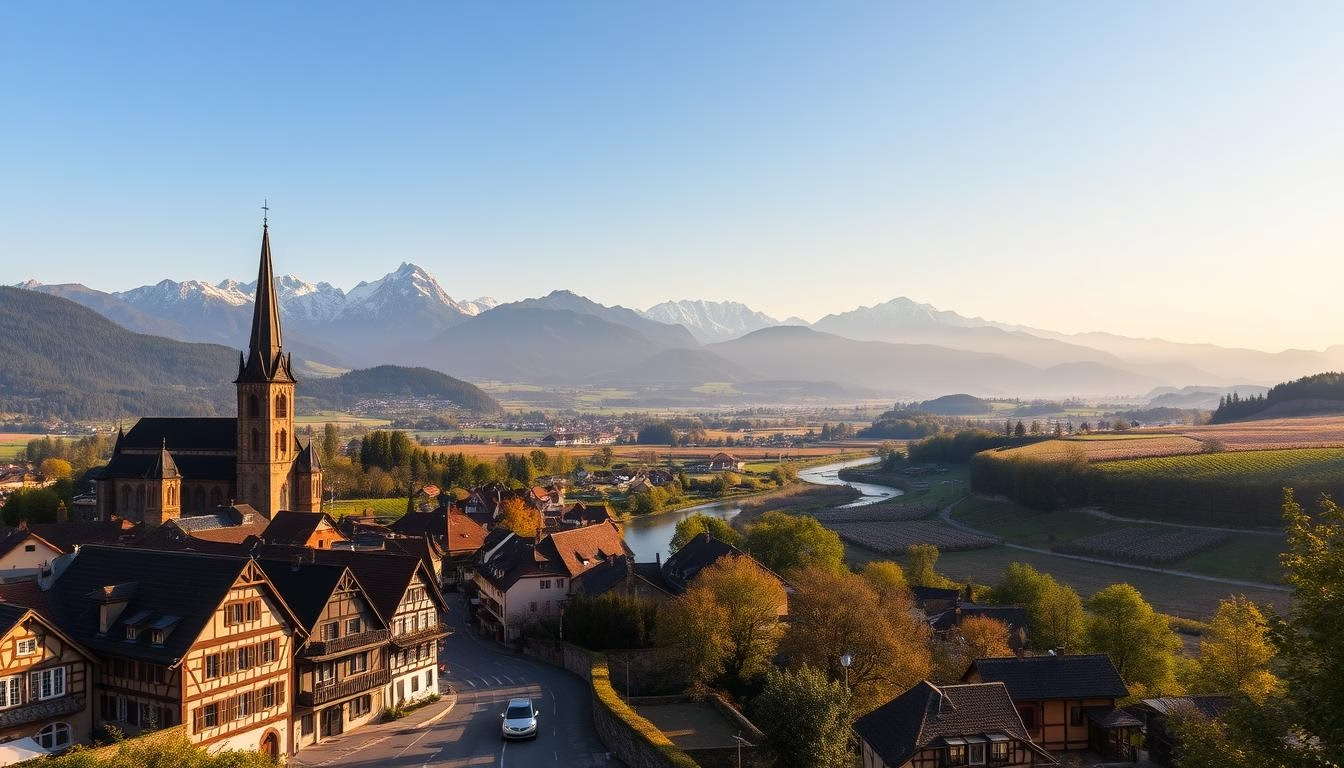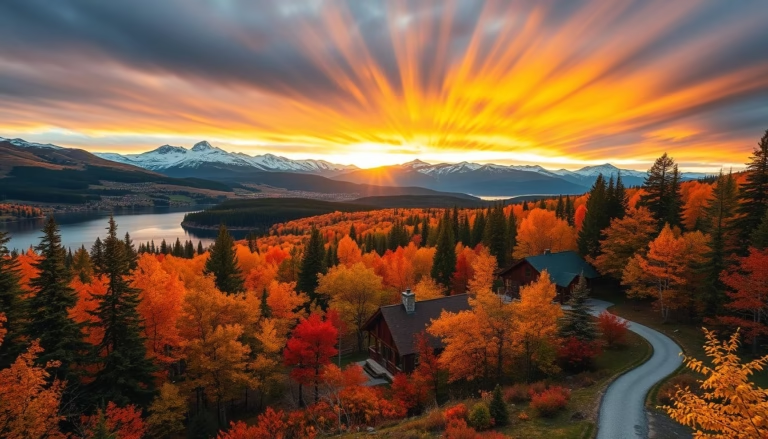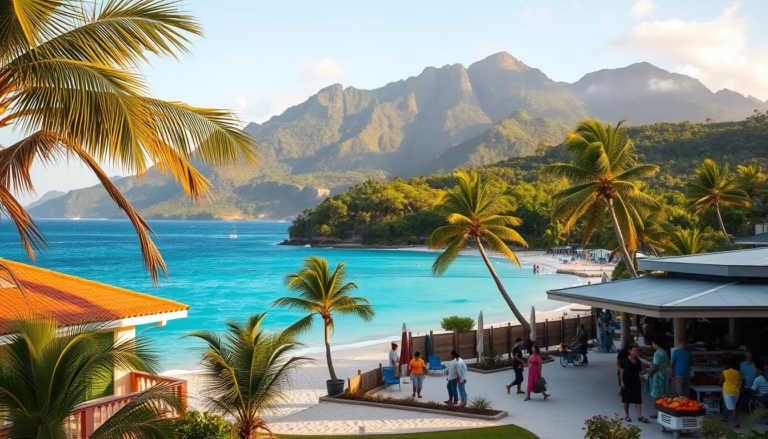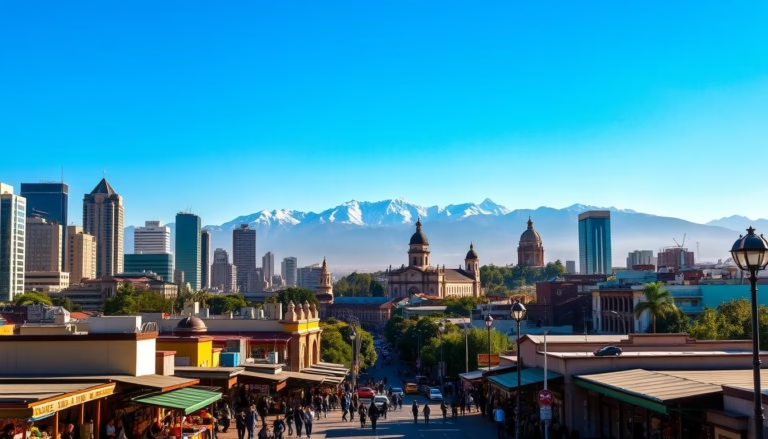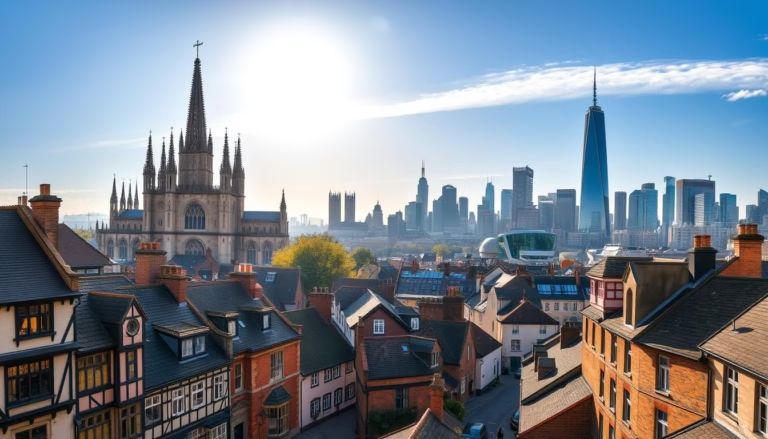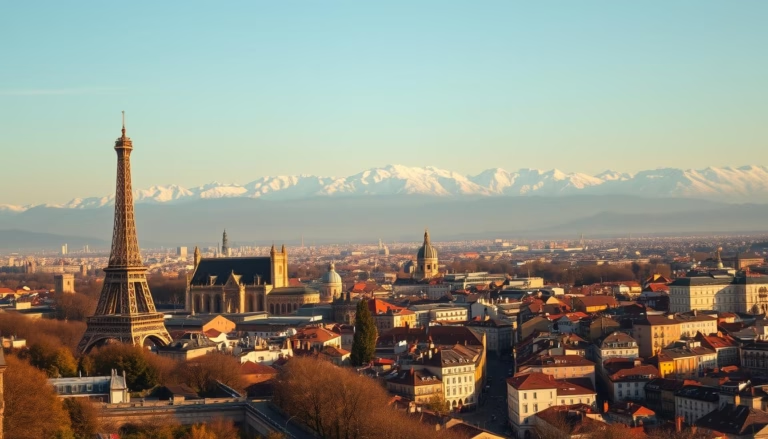Best Places to Visit in Germany: A Traveler’s Guide
Germany blends centuries-old charm with modern energy, creating a destination that satisfies every traveler’s curiosity. Picture storybook villages with cobblestone streets, lively urban hubs buzzing with creativity, and landscapes ranging from dense forests to snow-capped peaks. Whether you’re drawn to history, art, or outdoor thrills, this country delivers unforgettable moments at every turn.
Berlin’s edgy graffiti contrasts with Heidelberg’s romantic castle ruins, while the Bavarian Alps host iconic landmarks like Neuschwanstein. Smaller towns, such as Rothenburg ob der Tauber, showcase half-timbered architecture straight from a fairy tale. For urban explorers, Germany’s cities mix museums, nightlife, and green spaces like Munich’s sprawling Englischer Garten.
Culture thrives here, too. UNESCO sites like Cologne Cathedral and the Würzburg Residence highlight the nation’s artistic legacy. Meanwhile, festivals like Oktoberfest and Christmas markets offer lively glimpses into local traditions. Foodies can savor hearty dishes, while wine lovers explore vineyard-dotted valleys along the Rhine.
Key Takeaways
- Germany combines historic landmarks with modern cities for diverse experiences.
- Explore medieval towns, UNESCO sites, and scenic natural parks.
- Urban hubs like Berlin and Munich blend culture, nightlife, and green spaces.
- Seasonal festivals and regional cuisine deepen cultural immersion.
- Outdoor adventures range from hiking in the Alps to cruising river valleys.
Introduction to Germany’s Timeless Appeal
Germany invites travelers to experience a world where heritage and modernity coexist in perfect harmony. Centuries-old traditions thrive alongside sleek innovation, creating a cultural mosaic that feels both familiar and refreshingly new. Wander through villages where half-timbered houses lean over cobblestone lanes, their flower boxes bursting with color beneath slate roofs.
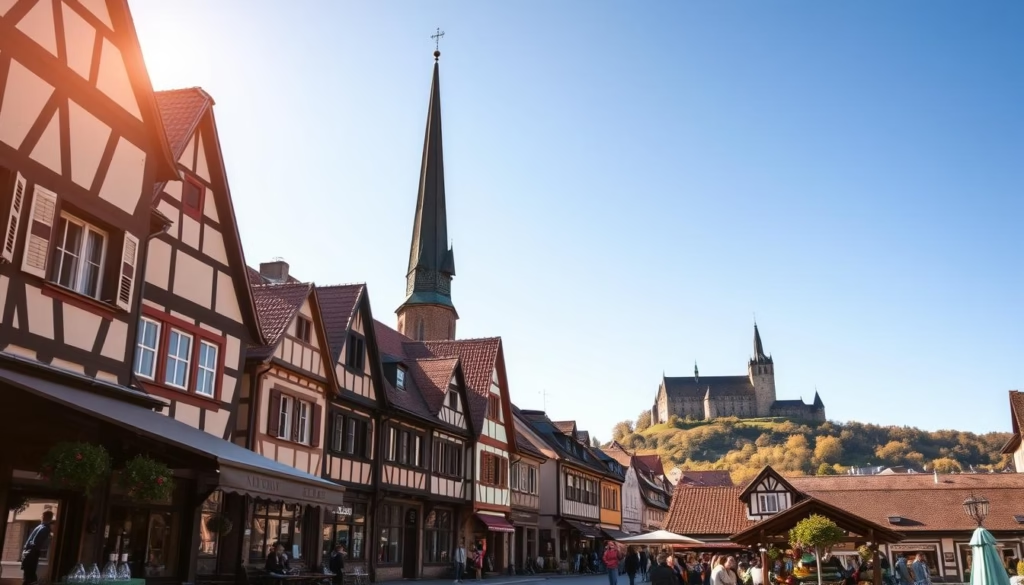
The country’s charm lies in its layered history, visible in Gothic cathedrals that pierce skylines and castles perched above misty valleys. Regions like the Black Forest whisper tales from Brothers Grimm, while the Rhine Valley’s vineyards slope toward rivers that shaped trade routes for generations.
Germany’s architecture tells stories across time – Romanesque churches stand minutes away from glass-walled museums showcasing digital art. This balance extends beyond bricks and mortar. Festivals revive medieval customs, and family-run breweries craft recipes older than the United States.
Whether tracing the footsteps of philosophers in university towns or cycling through lavender fields framed by Alpine peaks, every moment here connects past and present. It’s a land where fairy tales feel tangible, and innovation sparks around every corner.
Exploring Best Places to Visit in Germany
From urban energy to pastoral tranquility, this country’s iconic spots create a trip tailored to every taste. Whether you crave museum-hopping in sleek capitals or sipping Riesling in vine-clad valleys, memorable moments await around every corner.
Iconic Destinations to Consider
Berlin pulses with creativity – think street art murals in Kreuzberg and futuristic glass domes atop the Reichstag. Munich balances tradition with alpine access, where beer gardens sit a train ride from snow-dusted peaks. Frankfurt’s skyline dazzles with skyscrapers, yet its cobblestone Altstadt whispers tales of medieval trade routes.
Highlights from Top Regions
Bavaria’s rolling hills cradle Neuschwanstein’s turrets, while the Rhine Valley charms with storybook villages like Bacharach. The Black Forest lures hikers to misty trails and cuckoo clock workshops. Up north, Hamburg’s harbor buzzes with maritime history, and Dresden’s rebuilt Frauenkirche symbolizes cultural rebirth.
Each area offers distinct flavors. Sample smoky sausages in Franconia, sail the Baltic coast’s fjord-like inlets, or bike through Saxony’s vineyard terraces. These regional contrasts turn a simple vacation into a layered journey through time and terrain.
Bavarian Fairy Tale Towns and Medieval Charm
Bavaria’s medieval towns look like pages torn from a storybook, where time seems to stand still among winding lanes and age-old traditions. These settlements preserve centuries of history in their architecture and customs, offering visitors an authentic journey through Europe’s romantic past.
Rothenburg ob der Tauber and Its Storybook Vibes
Rothenburg ob der Tauber feels like stepping into a medieval storybook. Its cobblestone streets wind past colorful half-timbered houses with flower-filled window boxes. The iconic Plönlein corner – where two towers frame a sun-dappled lane – has become Germany’s most photographed intersection.
Founded in 1274, this walled town along the Romantic Road hosts night watchman tours and Christmas markets that glow with handcrafted ornaments. Don’t miss trying Schneeballen, local pastries dusted with powdered sugar.
Bamberg’s Quaint Old Town
Bamberg’s UNESCO-listed old town straddles the Regnitz River like a medieval postcard. Baroque palaces rub shoulders with 11th-century cathedrals, while fishermen’s cottages line the waterfront. The town’s unique smoked beer, brewed since the 1600s, pairs perfectly with Franconian dumplings at historic taverns.
| Feature | Rothenburg ob der Tauber | Bamberg |
|---|---|---|
| Founded | 1274 | 902 AD |
| Architectural Style | Medieval | Baroque & Medieval |
| Signature Experience | Night Watchman Tours | Smoked Beer Tasting |
| Must-See Spot | Plönlein Corner | Old Town Hall |
Both towns showcase Bavaria’s talent for preserving history while keeping traditions alive. From climbing Rothenburg’s intact city walls to cruising Bamberg’s river canals, these destinations make history feel deliciously present.
The Magic of Castles and Palaces
Germany’s skyline is punctuated by storybook castles that seem plucked from fantasy novels. These architectural marvels blend romantic design with royal history, creating backdrops so stunning they’ve inspired global icons. Two gems stand out near the Austrian border, each offering unique glimpses into Bavaria’s regal past.
Neuschwanstein Castle: Inspiration for Dreams
Perched like a jewel in the Bavarian Alps, Neuschwanstein’s ivory towers defy gravity. King Ludwig II commissioned this 19th-century masterpiece as a tribute to Wagnerian operas, filling its halls with murals of knights and mythical creatures. The throne room’s Byzantine mosaics and the grotto-like winter garden showcase architecture that feels both ancient and ahead of its time.
Hohenschwangau Castle: A Royal Fairytale
Just a valley away, Hohenschwangau’s golden walls glow against evergreen slopes. This sunlit retreat shaped young Ludwig’s imagination, its rooms adorned with frescoes of German legends. Visitors today can admire original furnishings and panoramic views from Queen Marie’s balcony – the same vistas that fueled a king’s castle-building obsession.
Both castles shine brightest when approached via Marienbrücke. This cliffside bridge offers heart-stopping perspectives of Neuschwanstein’s spires and the alpine valley below. Guided tours reveal hidden details, like Ludwig’s swan-shaped faucets and secret staircases designed for solitary walks.
Historic Cities That Steep in Tradition
Walking through Regensburg feels like turning pages in a medieval manuscript where every corner reveals new stories. This city earned its UNESCO World Heritage status by preserving architectural treasures spanning eight centuries. Unlike static museums, its lively plazas and riverside promenades pulse with modern energy while honoring the past.
Regensburg and Its Timeless Pathways
The old town enchants visitors with candy-colored buildings leaning over cobblestone streets barely wide enough for two bicycles. St. Peter’s Cathedral towers above the skyline, its Gothic spires reaching toward clouds that once inspired Renaissance painters. Don’t miss the 12th-century Stone Bridge – a marvel of medieval engineering offering panoramic Danube views.
When winter arrives, Thurn und Taxis Palace transforms into a holiday wonderland. Hand-carved nutcrackers stand guard over stalls selling gingerbread hearts and glühwein. For year-round flavor, visit Wurstkuchl – the world’s oldest sausage kitchen – where smoky bratwurst sizzles in recipes unchanged since 1146 AD.
Local beer gardens along the riverbank serve regional brews in shaded courtyards. As you sip a crisp Helles lager, watch barges glide past the same medieval skyline that charmed kings and merchants centuries ago. Here, history isn’t confined to guidebooks – it lives in every steamed pretzel and church bell chime.
Old Towns and Timeless Architecture
Bremen wears its 1,200-year history like a well-tailored coat – classic lines with modern stitching. This riverfront city masterfully balances medieval treasures with sleek urban spaces, creating an architecture lover’s playground where every era gets a seat at the table.
Where Centuries Collide
At the heart beats the old town‘s UNESCO duo: the Gothic town hall with its golden Renaissance facade and the 18-foot Roland statue. These stone sentinels guarded Bremen’s independence during Hanseatic trading days. Just steps away, the Schnoor quarter’s crooked streets wind between dollhouse-sized buildings from the 15th century.
Modern life thrives in restored spaces. A former wool warehouse now hosts indie coffee roasters, while medieval cellars serve craft beers. Along the Weser River, glass-fronted museums nod to maritime history beside floating hotels docked in old harbor basins.
| Feature | Historical Example | Modern Counterpart |
|---|---|---|
| Trade Hub | Schlachte medieval port | Waterfront science center |
| Public Art | Roland statue (1404) | Robotic sculpture garden |
| Gathering Space | Market square cobblestones | Rooftop urban farm |
Don’t miss the bronze donkey, dog, cat, and rooster stacked near the town hall. This playful tribute to Grimm’s fairy tale characters reminds visitors that even serious architecture needs whimsy. As sunset paints the old town in gold, join locals sipping Riesling where merchants once haggled over spice shipments – proof that great cities never stop evolving.
Natural Wonders and Scenic Landscapes
Germany’s wild spaces offer dramatic contrasts to its urban energy. Misty forests hide cascading waterfalls, while mirror-like lakes reflect jagged peaks. These landscapes invite slow exploration, rewarding travelers with moments of pure awe.
The Enchanting Black Forest
Sunlight filters through ancient evergreens in this storybook region. Quaint villages with sloping roofs dot hillsides, where trails lead to natural wonders like Triberg Falls. After hiking, unwind in Baden-Baden’s thermal baths or cruise Titisee Lake’s glassy waters.
Lake Königssee and Alpine Beauty
Nestled within Berchtesgaden national park, this alpine gem stuns with emerald hues. Electric boats glide past the red-domed St. Bartholomew’s chapel, their quiet motors preserving the silence. Hikers gain panoramic views from trails winding through flower-strewn meadows.
Both regions showcase nature’s beauty at its most untamed. Whether tracing forest paths or listening for echoes off Königssee’s cliffs, these landscapes leave lasting impressions of earth’s artistry.
